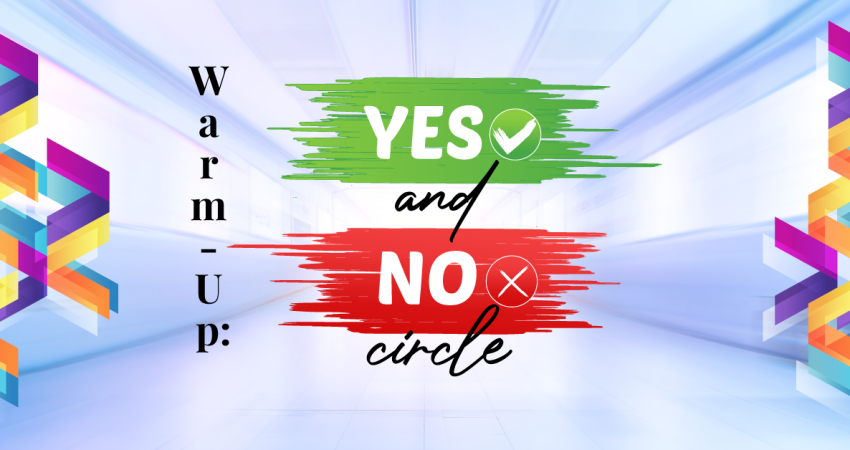The following warm-up exercise is simple, but can evoke some strong feelings and reactions. It’s a great exercise to help students develop awareness and practice consent and setting boundaries. It can be completed live in class or virtually (click the link at the bottom of the article to download virtual instructions).
Personal Exercise Instructions:
- Students will sit in a circle. Have a student stand in the middle of the circle.
- The middle student will turn to face any student in the circle, make eye contact, and say that student’s name.
- The student he names will answer yes or no. These are the only two options and there is no elaboration, explanation or paraphrasing. Just yes or no.
- If the student in the circle says yes, he will take the middle student’s place, and the middle student will take the empty place in the circle. The new student in the middle will then turn to another student and continue with the exercise.
- If the student in the circle says no, the middle student will turn to someone else, make eye contact, and say that student’s name. Then the student will answer yes or no. If they say yes, they will take the middle student’s place (as above). If they say no, the middle student will continue to say names until someone says yes and takes their place in the middle of the circle. Continue playing as many rounds as you like.
Simple, right? But the reactions that often occur while working through this exercise are varied and interesting. If time allows, share with students about the emotional and physical reactions that occurred for them, or give them the opportunity to journal about their reactions. Here are some recommendations:
- How did you feel when you said no to someone (emotionally, physically, or both)?
- How did you feel when someone said no to you?
- Did you feel pressured to answer one way or another? Why or why not?
- How does this exercise help you in drama class?
- How can this exercise be applied in the real world?
Some of the emotional reactions that commonly occur include worrying that they will be stuck in the middle for ages, feeling frustrated at being constantly told no, feeling guilty for saying no, feeling obligated or pressured to say yes, feeling that they should give the same answer as their friends, or feeling that they have to explain or justify their choice to say no. It can be surprisingly difficult to say no directly to someone! (Teachers, this is a great opportunity to remind students that “no” is a complete sentence.)
Physical reactions may include faster breathing, avoiding or wanting to avoid eye contact, tightness or tension in the body (especially the stomach), itching or crawling, agitation or clenching of the jaw or teeth. It is also normal not to have any of those physical or emotional reactions, or to have other than those listed above. Encourage students to consider why they feel the way they do.
Note: It might help to do a quick stretch, shaking, or dance party to transition students to a different activity after completing this warm-up exercise, especially if they feel tension in their bodies or uncomfortable feelings.
Click here for virtual classroom fitting instructions.
Kerry Hishon is a director, actor, writer and stage fighter from London, Ontario, Canada. She blogs at www.kerryhishon.com.
Want to learn more about our newest pieces, resources, and giveaways?
Get on our list!

